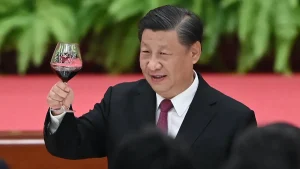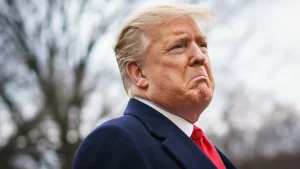Four Counter Sanction Strategies that China Can Learn from Russia
When the conflict between Russia and Ukraine erupted, Russia’s economy faced significant challenges, including capital flight and a sharp depreciation of the ruble. Western media quickly predicted that Russia’s economy would be pushed into a dead end. However, as the war progressed, the Russian economy unexpectedly experienced a surge in demand.
Remarkably, in 2023, the Russian economy has been performing exceptionally well. Recent statistics reveal that Russia’s GDP in 2023 has surpassed Germany’s by $5.6 trillion in terms of purchasing power parity (PPP), establishing itself as Europe’s largest and the world’s fifth-largest economy. This outcome starkly contradicts the initial predictions made by public opinion at the onset of the conflict in 2022.
How did Russia manage to evade extensive economic sanctions imposed by the West? How did the situation unfold and evolve? What lessons can China learn from these sanctions and counter-sanctions? In this discussion, I will concentrate on these four key aspects:
First and foremost, Russia demonstrated a determination to pursue its course instead of succumbing to the expectations of the West during the sanctions.
When the West initially imposed financial sanctions, Russia faced significant challenges, including capital flight and a drastic decline in the exchange rate. At that time, the conventional approach to managing an exchange rate crisis would have involved utilizing foreign exchange reserves to stabilize the currency. However, adopting this strategy would have placed a severe strain on Russia’s financial system. Despite the Central Bank of Russia’s efforts to curb capital flight by raising interest rates, the results were limited. Historically, attempts to defend exchange rates in the face of capital flight have had little success, often leading to further economic decline. If Russia had chosen to follow the same path, it would have likely met a similar fate.
Instead, Russia took a different approach by requiring unfriendly nations to use the ruble as the settlement currency for importing Russian energy and resources. Since these countries lacked ruble reserves, they had to purchase rubles from the international market, leading to a sharp increase in demand for the currency and subsequently stabilizing the exchange rate. Through this unconventional measure, the ruble exchange rate returned to normal without active defence. The Central Bank of Russia reduced interest rates in line with the trend, and investment and consumption were not significantly impacted.
This incident serves as a reminder that when facing similar financial sanctions, it is possible to explore responses that go beyond the strategies designed by others. For instance, if there is a need to protect the exchange rate of the RMB, traditional methods may be well-known in Western countries. By offering alternative options, we can navigate potential traps and achieve more favourable and effective outcomes than following a predetermined path.
Russia recognized that the essence of economic development is not solely determined by financial gains and losses. Even in the face of a sharp depreciation of the ruble in the short term, Russia is still able to support and even stimulate its economic growth by printing money. As Western capital began to withdraw significantly from the Russian market, new opportunities emerged for local Russian companies, as well as foreign companies like China. Russia found ways to stabilize and utilize this capital while facilitating acquisitions of these companies, enabling local entities to swiftly fill the gap left by the departure of Western capital and driving the rapid recovery of Russia’s real economy.
Russia’s experience demonstrated that the withdrawal of capital and financial challenges are not insurmountable if a nation can find ways to maintain the normal functioning of its economy. It is essential to recognize that, for sovereign countries, the currency serves as a tool for economic management. The key lies in ensuring the sustainable development of the economy. Russia’s journey serves as a testament to this principle, debunking the notion that Western sanctions are an insurmountable obstacle.
Secondly, it is crucial to emphasize the importance of maintaining the integrity of the industrial and supply chains for the wartime economy.
In recent years, Russia’s economic development has been heavily reliant on energy development and exports. Consequently, at the onset of the conflict, Russia fought a poorly equipped battle and struggled to maintain its logistical, military, and artillery supply chain.
However, Russia swiftly took action to rebuild its industrial capability, surpassing the expectations of the West. The impact of this reconstruction was remarkable. Presently, Russia can fire 50,000 to 60,000 artillery shells per day, while Ukraine is limited to 10,000 shells. This achievement signifies Russia’s self-sufficiency in the munitions industry chain. The West has come to realize that Russia’s strength has been growing. Moreover, the order of life, economic development, and city supplies in Russia face no significant issues. In essence, Russia’s industrial chain has been fully restored, enabling the normal continuation of the lives of its people.
This highlights the vital importance of building a robust industrial chain. When faced with Western financial sanctions, Russia’s primary concern was not solely addressing the loss of financial assets but ensuring the resilience and operational continuity of its supply chain. This lesson holds great significance for China as well. In the event of financial sanctions, it is imperative for China to recognize the criticality of securing its own supply chain. By safeguarding the supply chain, China can maintain maneuverability and resilience in the face of potential financial sanctions and capital outflows, as Russia’s experience has demonstrated.
Thirdly, it is essential to expand the circle of friendly nations and ensure the security and smooth flow of international trade with non-Western countries.
Interestingly, at the onset of the conflict, a significant number of countries in the UN General Assembly condemned Russia for its military operation in Ukraine. However, when the West imposed comprehensive economic sanctions on Russia, not a single country from the Global South participated in these sanctions. As a result, Russia’s trade continued smoothly and its business operations remained unaffected.
During this period, India even made a fortune. Despite facing criticism in the US and European media for its stance on the Russia-Ukraine conflict, India continued to import substantial quantities of Russian crude oil. Furthermore, in recent years, India has increased its investments in oil refining, processing the cheaply imported Russian crude oil into kerosene, diesel, and gasoline, which are then sold to Europe and the United States, yielding significant profits.
India is not alone in maintaining normal trade with Russia and serving as a re-export hub. Many other countries engage in similar practices, ensuring the smooth functioning of Russia’s international trade.
This underscores the immense importance of maintaining international trade with non-Western countries. Over the past few years, as the processes of “decoupling” and “de-risking” have unfolded, China’s exports to the West have experienced a sharp decline. However, simultaneously, China’s international trade with non-Western countries has seen rapid growth. ASEAN, for instance, has become China’s top trading partner since 2019, surpassing the European Union. Notably, China’s trade with other nations has surpassed its trade with the United States, Europe, and Japan since the onset of the pandemic. These developments highlight the significant shift in China’s trade dynamics and emphasize the importance of diversifying trading partners beyond the Western sphere.
Fourthly, it is crucial to ensure international trade and cross-border payments while reducing dependence on Western currencies such as the dollar and the euro.
The heavy reliance on the dollar and the euro in international trade has raised concerns about the potential impact on a country’s development in the face of comprehensive economic warfare and sanctions from the West. As a result of these sanctions, Russia has been unable to conduct transactions with other countries using Western currencies like the dollar and the euro. Consequently, a significant portion of Russia’s international trade has shifted away from reliance on these currencies for settlement.
Remarkably, Russia’s international trade has experienced positive growth from 2022 to 2023. For instance, trade between Russia and China exceeded $200 billion in 2023 and continues to grow at a rapid pace. These non-dollar transactions have not only supported Russia’s economic development but also ensured its financial security.
The strides made by China and Russia in non-dollar and non-euro cross-border transactions have far-reaching implications. When the Russia-Ukraine conflict erupted two years ago, the United States began drawing comparisons between China and Russia, often referring to them jointly. During a conversation with Western business elites, I jokingly cautioned them against pushing Russia into China’s embrace, as the consequences could be disastrous for them. I urged them to consider the magnitude of such a scenario, where the world’s largest resource-rich country, Russia, and the world’s largest manufacturing powerhouse, China, were closely aligned. The potential consequences of tying these two countries together should not be taken lightly.
Currently, China possesses the world’s largest manufacturing capacity, which enables it to process all of Russia’s abundant resources. The potential for cooperation between these two countries to dominate the global market was evident. Westerners often proudly asked us, “How will you settle the transactions?” They believed that if the West cut off the settlement currency for trade between China and Russia, cooperation between the two countries would be impossible. However, I argued that with China’s immense industrial manufacturing capacity and Russia’s vast resource supply, what currency settlement would they really need? It would be as simple as writing a blank check. This highlights the historical significance of non-euro, non-dollar settlements between China and Russia.
During the BRICS leaders’ meeting in South Africa last year, “de-dollarization” was an important topic of discussion. Although it was not thoroughly explored due to the expansion of BRICS, think tanks from BRICS countries have been studying this issue. China and Russia have achieved great success in maintaining bilateral trade growth through non-dollar transactions, and this approach is expected to become the primary method of international trade and cross-border investment among BRICS countries in the future.
By using the purchasing power parity method, the combined GDP of the BRICS countries has already surpassed that of the G7. With such significant transaction volume, the potential impact on the world economy would be immense if they were to eliminate dollar and euro transactions. If non-euro, non-dollar trade cooperation and cross-border transactions are established among the BRICS countries, the entire Global South can participate in these trading activities in the future. Consequently, we need to consider new methods, such as “encircling the city from the countryside,” to neutralize the effects of Western financial sanctions.
Therefore, since the crisis in Ukraine, Russia has provided us with invaluable experiences. We can learn numerous lessons from their example, enabling us to face future Western financial and economic sanctions with greater confidence and resilience.
Editor: Charriot Zhai



